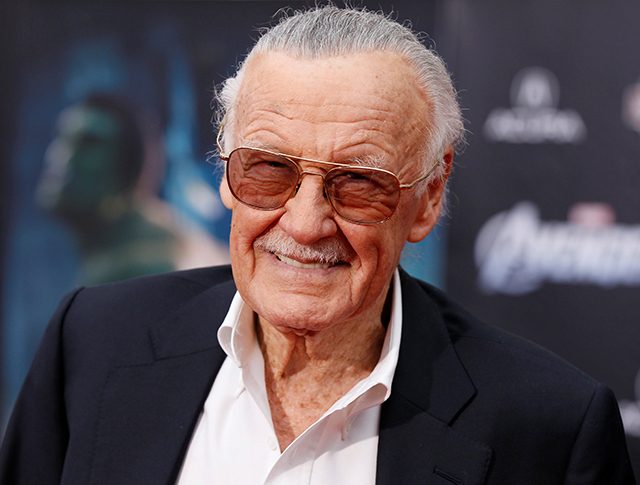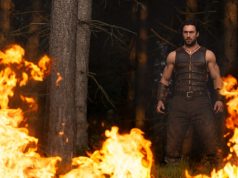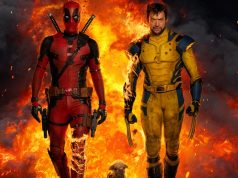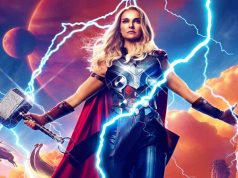
LOS ANGELES —Stan Lee, who dreamed up Spider-Man, Iron Man, the Hulk, Black Panther and a cavalcade of other Marvel Comics superheroes that became mythic figures in pop culture with soaring success at the movie box office, died at the age of 95, his daughter said on Monday.
As a writer and editor, Lee was key to the ascension of Marvel into a comic book titan in the 1960s when, in collaboration with artists such as Jack Kirby and Steve Ditko, he created superheroes who would enthrall generations of young readers.
“He felt an obligation to his fans to keep creating,” his daughter J.C. Lee said in a statement to Reuters. “He loved his life and he loved what he did for a living. His family loved him and his fans loved him. He was irreplaceable.”
She did not mention the circumstances of Lee‘s death but the celebrity news website TMZ said an ambulance was called to his Hollywood Hills home early Monday and that he died at Cedars-Sinai Medical Center.
“Stan Lee was as extraordinary as the characters he created,” Bob Iger, Chairman and CEO of The Walt Disney Co , said in a statement. “The scale of his imagination was only exceeded by the size of his heart.”
Disney bought Marvel Entertainment in 2009 for $4 billion to expand Disney’s roster of characters, with the most iconic ones having been Lee‘s handiwork.
Lee was known for his cameo roles in most Marvel films, pulling a girl away from falling debris in 2002’s “Spider-Man” and serving as an emcee at a strip club in 2016’s “Deadpool.” In the 2018 box-office hit “Black Panther,” which featured Lee‘s leading black superhero, he was a casino patron.
“There will never be another Stan Lee,” said Chris Evans, who starred as Captain America in Marvel movies. “For decades he provided both young and old with adventure, escape, comfort, confidence, inspiration, strength, friendship and joy.”
Americans were familiar with superheroes before Lee, in part thanks to the 1938 launch of Superman by Detective Comics, the company that would become DC Comics, Marvel’s arch rival.
Lee was widely credited with adding a new layer of complexity and humanity to superheroes. His characters were not made of stone – even if they appeared to have been chiseled from granite. They had love and money worries and endured tragic flaws or feelings of insecurity.
Characters weren’t just super
“I felt it would be fun to learn a little about their private lives, about their personalities and show that they are human as well as super,” Leetold NPR News in 2010.
He had help in designing the superheroes but he took full ownership of promoting them.
His creations included web-slinging teenager Spider-Man, the muscle-bound Hulk, mutant outsiders The X-Men, the close-knit Fantastic Four and the playboy-inventor Tony Stark, better known as Iron Man.
Dozens of Marvel Comics movies, with nearly all the major characters Lee created, were produced in the first decades of the 21st century, grossing more than $20 billion at theaters worldwide, according to box office analysts. The website Box Office Mojo said “Black Panther” had a worldwide gross of $1.34 billion.
Spider-Man is one of the most successfully licensed characters ever and he has soared through the New York skyline as a giant inflatable in the Macy’s Thanksgiving Day Parade.
Lee, as a hired hand at Marvel, received limited payback on the windfall from his characters.
In a 1998 contract, he wrestled a clause for 10 percent of profits from movies and TV shows with Marvel characters. In 2002, he sued to claim his share, months after “Spider-Man” conquered movie theaters. In a legal settlement three years later, he received a $10 million one-time payment.
Hollywood studios made superheroes the cornerstone of their strategy of producing fewer films and relying on big profits from blockbusters. Some people assumed that, as a result, Lee‘s wealth had soared. He disputed that.
“I don’t have $200 million. I don’t have $150 million. I don’t have $100 million or anywhere near that,” Lee told Playboy magazine in 2014. Having grown up in the Great Depression, Lee added that he was “happy enough to get a nice paycheck and be treated well.”
In 2008, Lee was awarded the National Medal of Arts, the highest government award for creative artists.
Uncle’s help
Lee was born as Stanley Martin Lieber in New York on Dec. 28, 1922, the son of Jewish immigrants from Romania. At age 17, he became an errand boy at Timely Comics, the company that would evolve into Marvel. He got the job with help from an inside connection, his uncle, according to Lee‘s autobiography “Excelsior!”
Lee soon earned writing duties and promotions. He penned Western stories and romances, as well as superhero tales, and often wrote standing on the porch of the Long Island, New York, home he shared with his wife, actress Joan Lee, whom he married in 1947. She died in 2017.
The couple had two children, Joan Celia born in 1950 and Jan Lee who died within three days of her birth in 1953.
In 1961, Lee‘s boss saw a rival publisher’s success with caped crusaders and told Lee to dream up a superhero team.
At the time, Lee felt comics were a dead-end career. But his wife urged him to give it one more shot and create the complex characters he wanted to, even if it led to his firing.
The result was the Fantastic Four. There was stretchable Mr. Fantastic, his future wife Invisible Woman, her brother the Human Torch and strongman The Thing. They were like a devoted but dysfunctional family.
Lee involved his artists in the process of creating the story and even the characters themselves, in what would come to be known as the “Marvel Method.” It sometimes led critics to fault Lee for taking credit for ideas not entirely his own.
He described his creative process to Reuters in outlining how he came up with his character Thor, the god of thunder borrowed from Norse mythology.
“I was trying to think of something that would be totally different,” he said. “What could be bigger and even more powerful than the Hulk? And I figured why not a legendary god?”
To give Thor more rhetorical punch, Lee gave him dialogue styled after the Bible and Shakespeare.
As for Tony Stark-Iron Man, he was based on industrialist Howard Hughes, Lee told interviewers.
Lee became Marvel’s publisher in 1972. He went on the lecture circuit, moved to Los Angeles in 1980 and pursued opportunities for his characters in movies and television.
Through it all, he kept connected with fans, writing a column called “Stan‘s Soapbox” in which he often slipped in his catchphrase “‘Nuff Said” or the sign-off “Excelsior!” In his later years, he gave updates via Twitter.
Lee all but parted ways with Marvel after being made chairman emeritus of the company. But even in his 80s and 90s, he was a wellspring of new projects, running a company called POW! Entertainment.
“His greatest legacy will be not only the co-creation of his characters but the way he helped to build the culture that comics have become, which is a pretty significant one,” said Robert Thompson, a pop culture expert at Syracuse University. —Reporting by Alex Dobuzinskis Editing by Diane Craft, Bill Trott and Nick Zieminski









